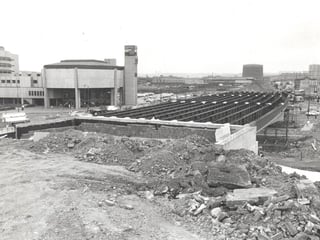Leeds city centre's Grand Quarter added to Historic England’s list of “at risk” spots


The area around the Grand Theatre on New Briggate is also home to the national opera company, Opera North, but is surrounded by empty shops and a “loss of architectural detail” that is said to have left it “looking down at heel”.
The so-called Grand Quarter - the first part of the city centre to be developed beyond the medieval boundaries of Leeds in the 1600s - is one of 12 sites across Yorkshire to be added to Historic England’s list of “at risk” spots.
Advertisement
Hide AdAdvertisement
Hide AdIt was designated a “conservation area” two years ago, in recognition of its “special architectural and historic interest”.
John Paul Walker, partnerships team leader at Historic England, said the Grand Quarter “needed help” to “find its new role in the life of the city”.
He added: “The bricks and stones of our historic places tell our stories and define where we live. But they need our constant care or they can become eyesores or even be lost altogether.”
In a management plan for the area published in 2017, Leeds City Council recognised that the Grand Quarter had “scope for significant enhancement”.
Advertisement
Hide AdAdvertisement
Hide AdIt said: “Disrepair, inappropriate change, loss of historic architectural details, vacancy and underuse of historic buildings and public realm issues are all putting the special character of the area at risk.”
The council suggested that Heritage Lottery funding could help regenerate the area.
The annual publication of the Heritage At Risk register is considered a stocktake of buildings and sites in various stages of rescue. Across Yorkshire, some 52 that are no longer considered to be in danger, have been removed.
They include the 19th century Potternewton Mansion, off Harehills Lane, originally built as a country house for the wool merchant James Brown, and later used as a school for disabled children.
Advertisement
Hide AdAdvertisement
Hide AdIn 2006, it was bought, in a run-down state, by the Sikh community for use as a temple, and became the first in the city to get a lottery grant for renovation.
It has now seen repairs to its leaking roof and contains a gallery for local artists,
Hugh Thompson, a consultant who advised the owners on its restoration, said: “It is a real barometer of the changing face of that part of Leeds.”
